Ever dreamed of standing at 6,119 meters with the Everest massif sprawling before you, but worried about blowing your savings? Yeah, that's the Lobuche East climbing dilemma.
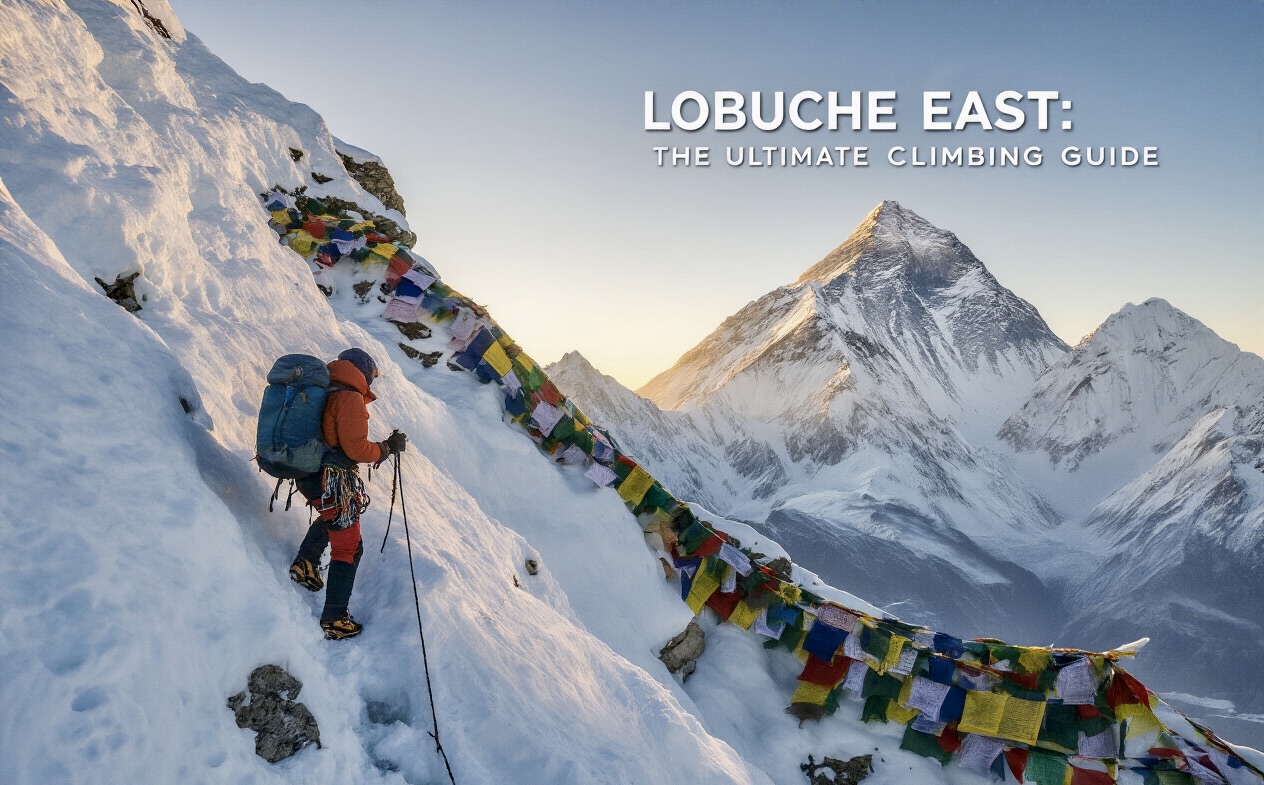
Let's cut through the noise - Lobuche East is that perfect sweet spot between trekking and serious mountaineering that doesn't require remortgaging your house.
For $2,500-$3,200, you're getting a 16-19 day adventure that delivers serious bragging rights without the extreme technical demands of its taller neighbors. The Lobuche East climbing cost covers everything from permits to experienced Sherpa guides who'll keep you alive while you're busy taking summit selfies.
But here's what most climbers don't realize until they're halfway up the mountain...
Overview of Lobuche East Peak
Geographic location and significance
Nestled in the Khumbu region of Nepal, Lobuche East Peak stands tall at 6,119 meters (20,075 feet). We consider this peak a gem in the Everest region, positioned just a few kilometers south of the iconic Everest Base Camp. What makes Lobuche truly special is its proximity to some of the world's most famous mountains – Everest, Lhotse, Nuptse, and Ama Dablam surround this magnificent peak.
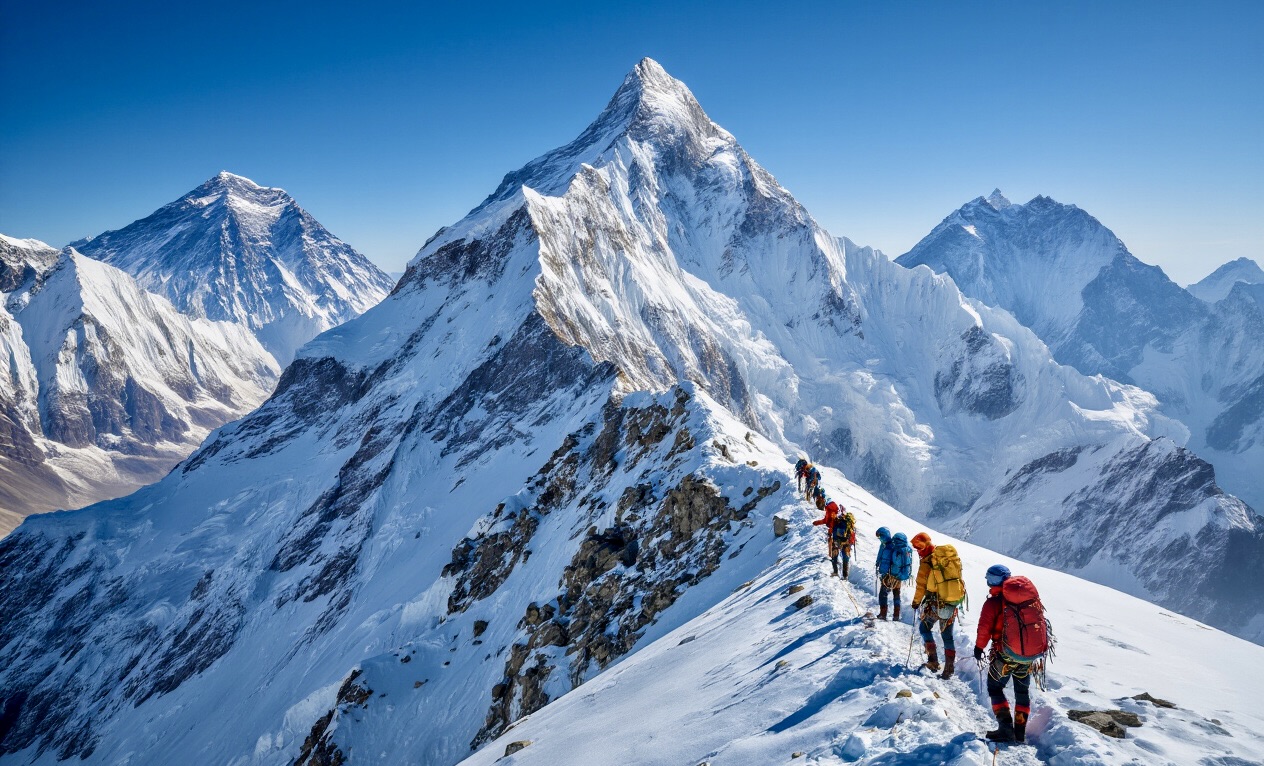
The mountain sits near its sister peak, Lobuche West, though they're technically separate mountains requiring different climbing permits. Our climbers often remark on the strategic importance of this peak as a training ground before attempting higher Himalayan giants. The mountain's location makes it an integral part of the acclimatization process for many Everest expeditions.
Climbing difficulty level
Lobuche East falls into the challenging category with a grade of "PD+" (Peu Difficile Plus). We've guided numerous climbers up this mountain and can confirm it's no walk in the park. The climb demands solid ice axe and crampon skills, rope techniques, and previous mountaineering experience.
The route includes steep snow slopes (up to 45-50 degrees) and exposed ridges that test both technical skills and mental fortitude. While not as technically demanding as some 8000-meter peaks, we never underestimate Lobuche's challenges. The final summit ridge particularly requires careful navigation and good balance.
Best seasons for climbing
We typically recommend two prime seasons for tackling Lobuche East:
Pre-monsoon (Spring): April to May offers stable weather with warmer temperatures and spectacular rhododendron blooms at lower elevations
Post-monsoon (Autumn): September to November brings clear skies, excellent visibility, and more stable conditions
Winter climbing (December-February) is possible but extremely challenging due to bitter cold and high winds. Summer months coincide with monsoon season, bringing heavy precipitation and unstable conditions that we generally avoid.
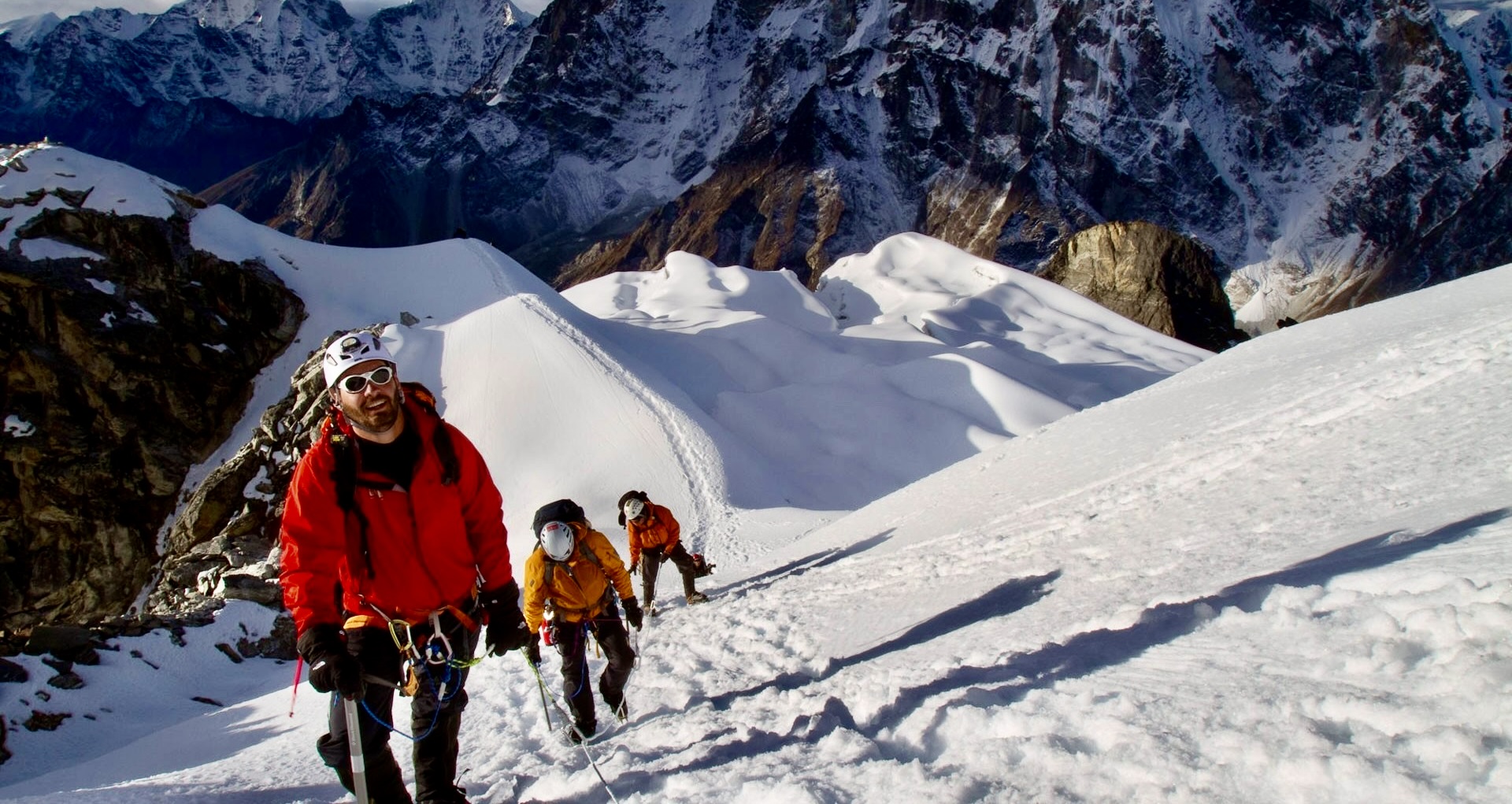
Popularity among mountaineers
Lobuche East has grown tremendously in popularity over the past decade. We've witnessed firsthand how this peak attracts three main groups:
- Beginner mountaineers seeking their first Himalayan experience
- Experienced climbers using it as acclimatization for higher peaks
- Trekkers looking to extend their EBC trek with a climbing challenge
The peak sees hundreds of attempts annually, with success rates varying between 60-75% depending on conditions and climber experience. Its accessibility from the main Everest Base Camp trail makes it logistically convenient compared to more remote peaks.
What draws climbers most? The perfect balance of challenge and achievability, plus those jaw-dropping summit views of Everest, Lhotse, and Nuptse that we never tire of sharing with our clients.
Comprehensive Cost Breakdown
Permit fees and documentation
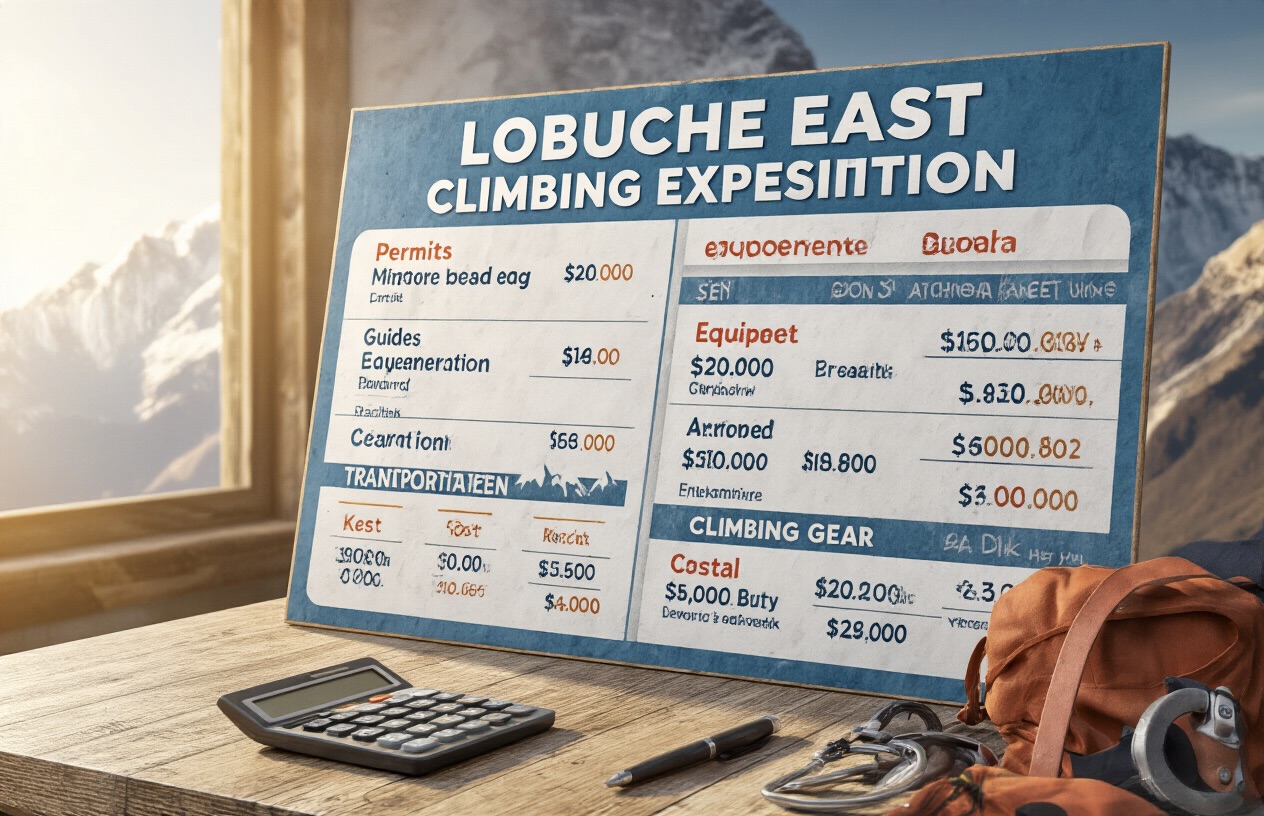
Climbing Lobuche East isn't just about physical preparation—it's also about paperwork and permits. We've got all the details on what you'll need:
- Climbing Permit: $250 per person for spring (March-May) and autumn (September-November); $125 for winter and summer seasons
- Sagarmatha National Park Entry Fee: $30 per person
- Khumbu Pasang Lhamu Rural Municipality Fee: $20 per person
- TIMS Card (Trekkers' Information Management System): $10 per person
These fees often change, so we always verify the current rates before finalizing your expedition package. We handle all the paperwork hassle for you, saving you valuable time and preventing potential headaches at checkpoints.
Equipment and gear expenses
Quality gear can make or break your Lobuche East climb. We recommend budgeting between $1,500-$3,000 for equipment if you're starting from scratch.
Here's what you'll need:
- Technical climbing gear: Crampons, ice axe, harness, carabiners, helmet ($500-800)
- High-altitude clothing: Down jacket, thermal layers, climbing boots, gloves ($600-1,200)
- Personal items: Sleeping bag (rated -20°C), backpack, trekking poles ($400-700)
We provide some shared equipment, like fixed ropes and cooking gear, in our packages. Many climbers rent equipment in Kathmandu for about $15-25 per item per day, which can significantly reduce your upfront costs.
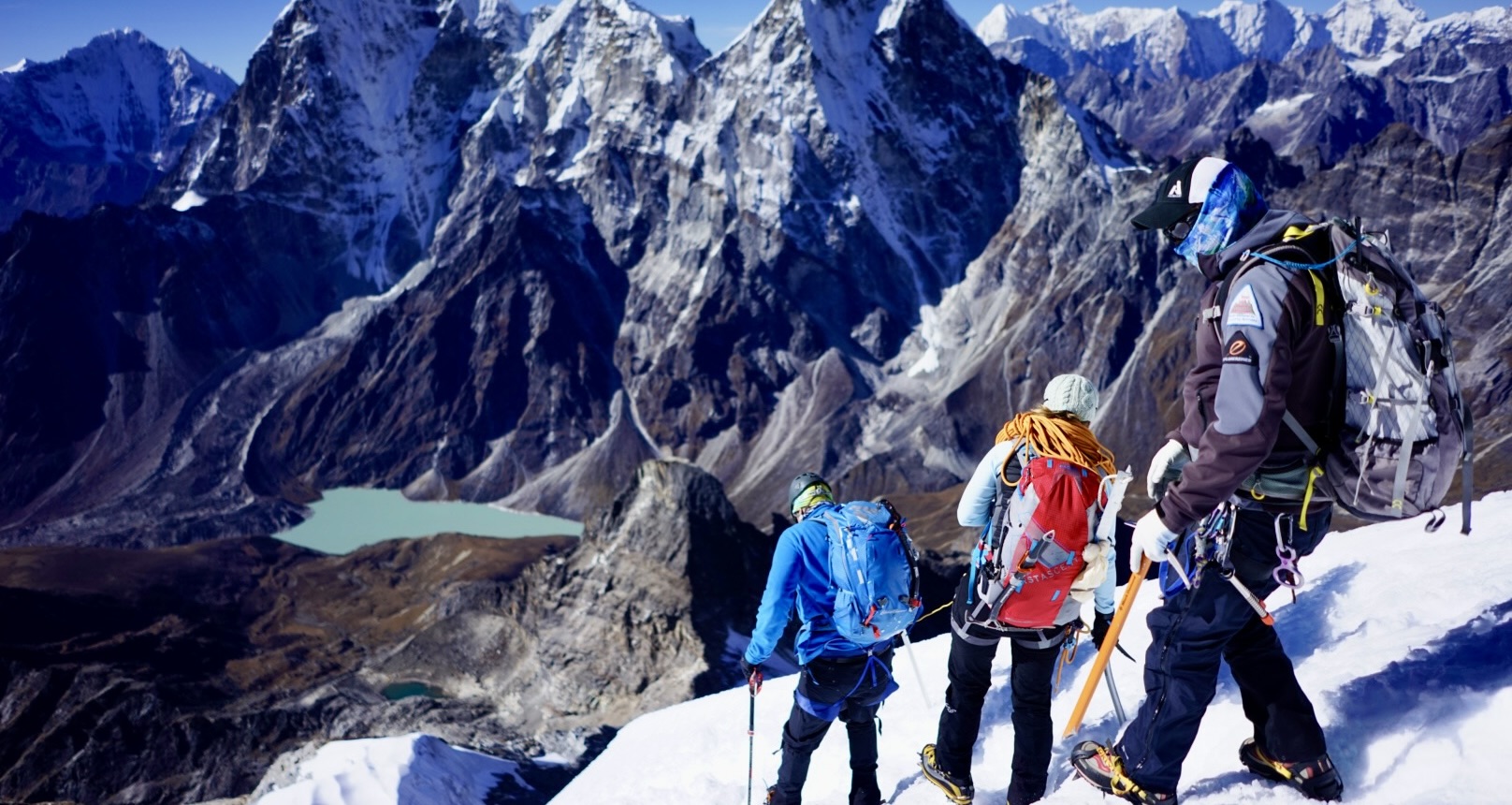
Guide and porter fees
Having experienced guides and porters is non-negotiable for your safety and success. Our team includes:
- Climbing Sherpa Guide: $50-70 per day (including insurance and equipment)
- Porters: $25-30 per day (typically one porter carries 25kg)
- Base Camp Cook and Kitchen Staff: $30-45 per day
We believe in fair compensation for our team members who work tirelessly to make your expedition successful. All our staff are properly insured and equipped.
Accommodation and food costs
Your accommodation journey varies as you ascend:
- Kathmandu: $30-100 per night depending on hotel standards
- Teahouses along the trek: $5-15 per night (basic rooms)
- Food in teahouses: $25-30 per day for three meals
- Base Camp: Included in most packages with comfortable tents and nutritious meals
- High camps: Simple mountain food prepared by our expedition cooks
Food quality and variety diminish with altitude, but we ensure you get the calories and nutrition needed for the climb. We accommodate dietary restrictions when notified in advance.
Transportation expenses
Getting to and from Lobuche East involves several modes of transport:
- International flights: $800-1,500 (depending on origin and season)
- Kathmandu to Lukla flights: $350-400 round trip
- Alternative route (if flights are canceled): Jeep to Phaplu and trek to Lukla adds $150-200
- Airport transfers in Kathmandu: $20-30
Weather in the Khumbu region is unpredictable, so we always build buffer days into our itinerary for potential flight delays. Helicopter evacuation insurance is strongly recommended and costs approximately $150-300, depending on coverage.
Detailed Climbing Itinerary
Day-by-day Schedule
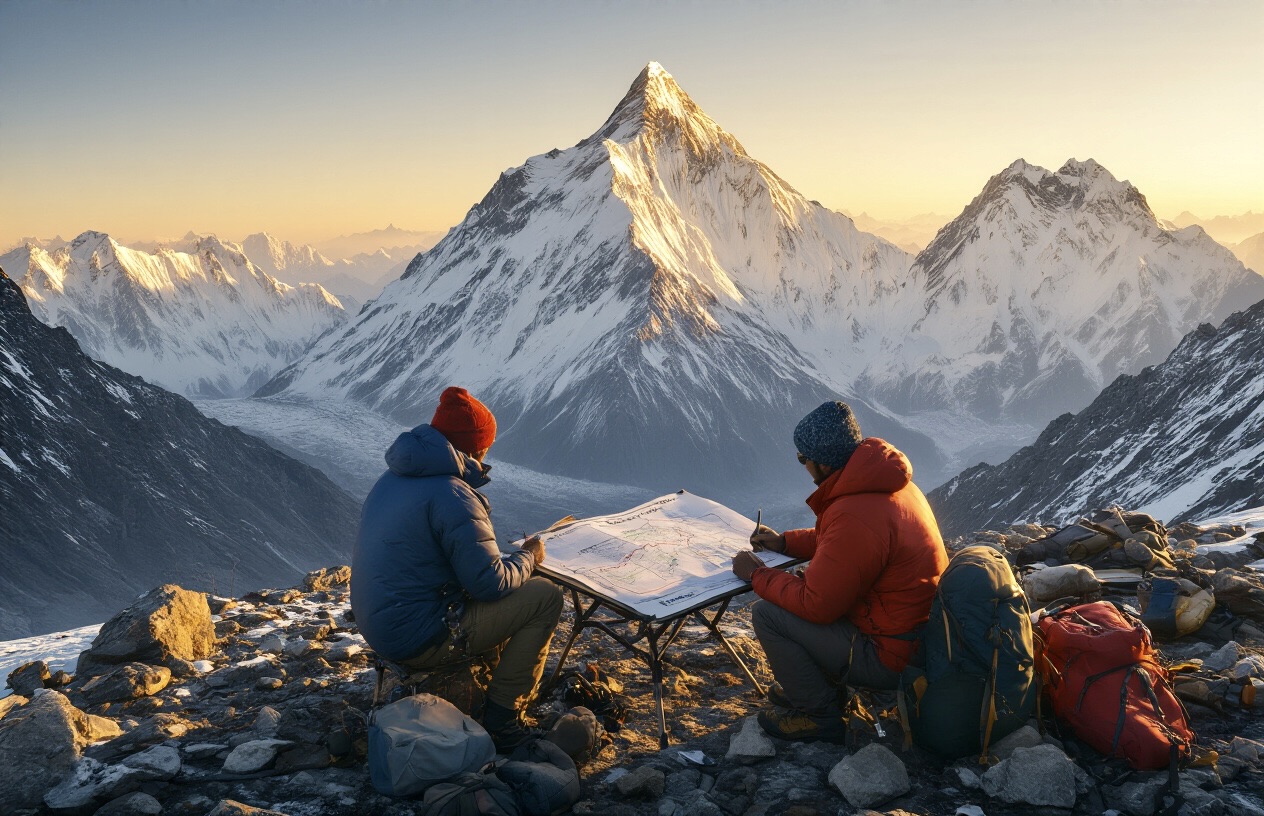
We've carefully crafted our Lobuche East climbing itinerary to maximize your chances of summit success while prioritizing safety and proper acclimatization. Here's what your adventure with us looks like:
Day 1: Arrive in Kathmandu (1,400m) and transfer to your hotel
Day 2: Permit arrangements and preparation day in Kathmandu
Day 3: Fly to Lukla (2,840m) and trek to Phakding (2,610m)
Day 4: Trek Phakding to Namche Bazaar (3,440m)
Day 5: Acclimatization day in Namche Bazaar
Day 6: Trek Namche to Tengboche (3,860m)
Day 7: Trek Tengboche to Dingboche (4,410m)
Day 8: Acclimatization day in Dingboche
Day 9: Trek Dingboche to Lobuche (4,910m)
Day 10: Trek Lobuche to Lobuche Base Camp (5,400m)
Day 11-12: Rest and training at Base Camp
Day 13: Climb to High Camp (5,800m)
Day 14: Summit Day (6,119m) and return to High Camp
Day 15: Descend to Pheriche (4,240m)
Day 16: Trek Pheriche to Namche Bazaar
Day 17: Trek Namche to Lukla
Day 18: Fly Lukla to Kathmandu
Day 19: Contingency day
Day 20: Departure from Kathmandu
Acclimatization Periods
Climbing at high altitude isn't something to rush. We've built in strategic acclimatization days that make all the difference in your summit success:
- Our first acclimatization stop is in Namche Bazaar (3,440m), the bustling Sherpa capital. Here, we'll take a day hike to higher elevation and then return to sleep at Namche – the classic "climb high, sleep low" strategy that helps your body adapt.
- Dingboche (4,410m) is our second acclimatization location. We'll hike up to Nangkartshang Peak (5,083m) for stunning views of Makalu, Lhotse, and Ama Dablam before descending to Dingboche for the night.
- At Lobuche Base Camp (5,400m), we spend two full days resting and conducting important training sessions. This gives your body crucial time to adapt to the thinning air while we refresh essential climbing skills.
Technical Climbing Sections
Lobuche East presents several technical challenges that require solid mountaineering skills:
- The Snow Slope: After leaving High Camp, we'll tackle a 30-45° snow slope requiring confident crampon technique. We secure this section with fixed ropes for added safety.
- The Rock Band: About midway up the route, we encounter a short but steep rock section (approximately 65-70°). Our experienced guides will assist you through this technical part using proper belay techniques.
- The Summit Ridge: The final approach involves a narrow, exposed ridge that demands careful balance and focus. We use fixed lines here to ensure safety while navigating this breathtaking but challenging section.
Our team ensures you're properly equipped and trained to handle these technical portions safely.
Summit Day Plan
Summit day is the moment everything builds toward. We start around 2:00 AM from High Camp with headlamps illuminating our path. The early departure gives us plenty of daylight hours for both the ascent and descent.
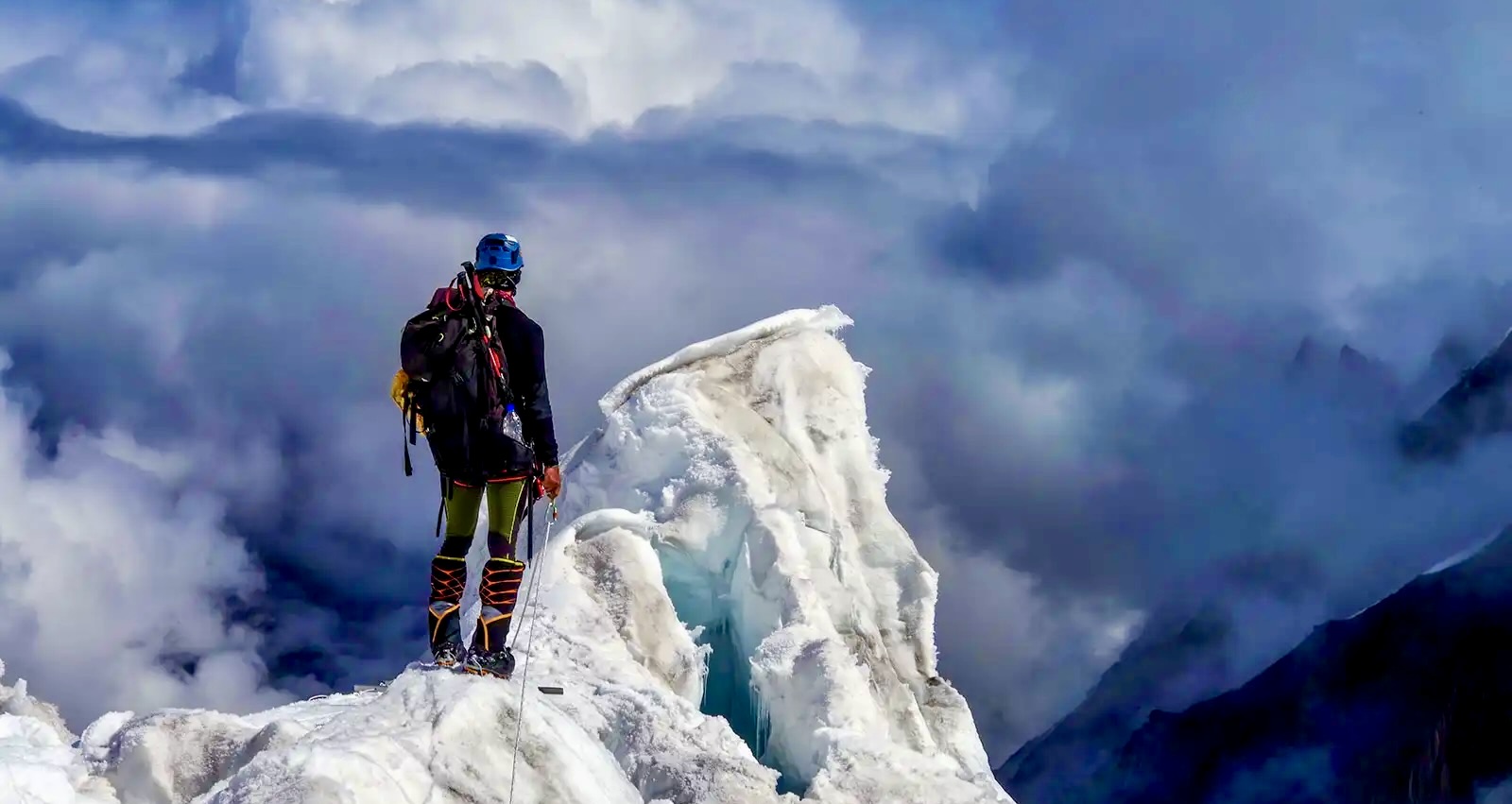
After roughly 5-6 hours of climbing (depending on conditions and group pace), we reach the summit. The panorama from the top is absolutely worth every step – Everest, Lhotse, Nuptse, Makalu, Cho Oyu, and countless other Himalayan giants spread before you.
We limit summit day to a strict turnaround time of 11:00 AM, regardless of position. This safety precaution ensures enough daylight for a safe descent to High Camp.
The complete summit day typically takes 8-10 hours round-trip. Upon returning to High Camp, we'll rest briefly before continuing down to Lobuche Base Camp the following day.
Preparation Guide
Physical fitness requirements
Listen up, climbing Lobuche East isn't a walk in the park. We've seen too many climbers show up unprepared, and trust us, that's not where you want to be at 6,119 meters.
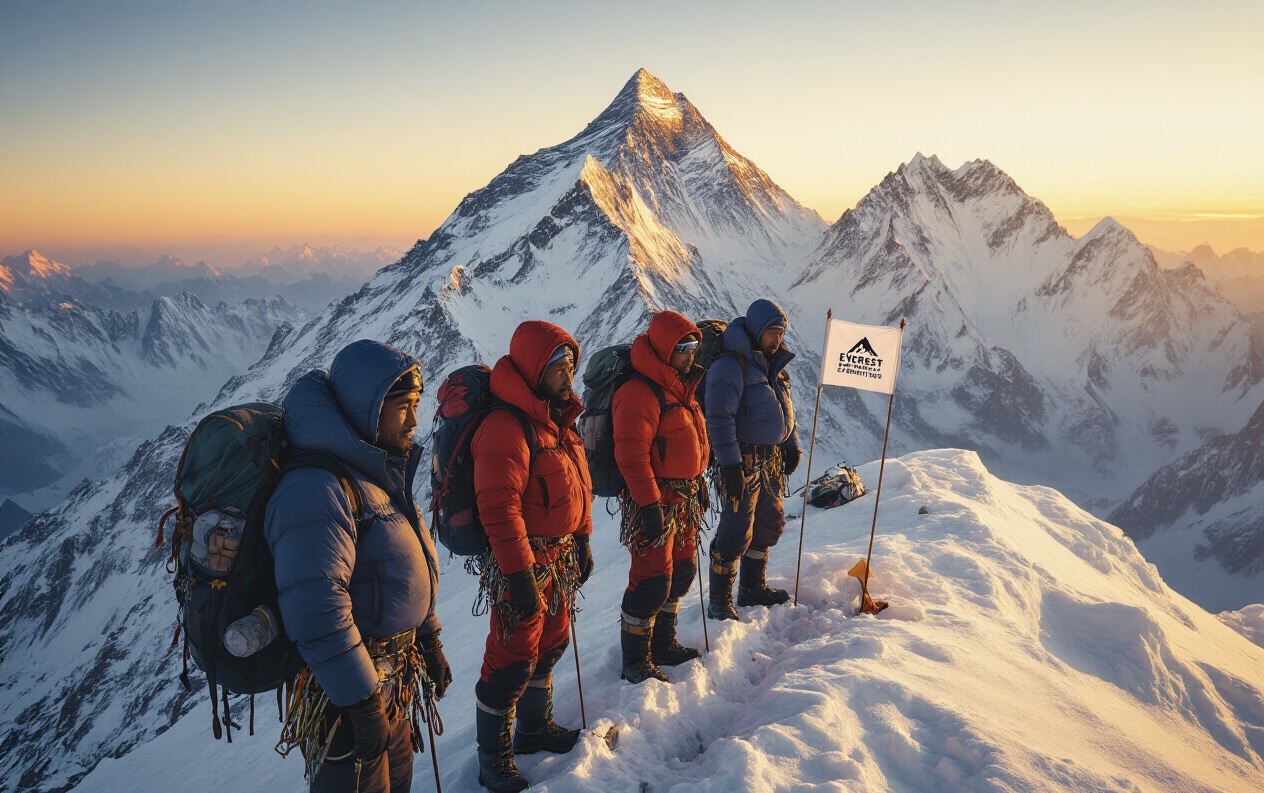
You'll need solid cardiovascular endurance to handle the thin air above 5,000 meters. We recommend being able to run 5km comfortably and hike with a 10kg pack for 6-8 hours before you even think about joining us.
Upper and lower body strength is crucial too. You'll be hauling yourself up fixed ropes and navigating through challenging terrain. Core strength helps with balance when you're crossing those nerve-wracking crevasses with a heavy pack.
Technical skills needed
While Lobuche East isn't as technical as some Himalayan peaks, you still need these basics:
- Cramponing skills on various terrain
- Ice axe use for self-arrest
- Fixed rope techniques (ascending/descending)
- Basic knowledge of knots and harness use
- Experience with steep snow slopes (up to 45-50 degrees)
We've seen complete beginners struggle unnecessarily. At minimum, get some experience on smaller mountains before joining us.
Recommended training schedule
Here's our tried-and-tested 16-week training plan:
Months 1-2:
- 3-4 days cardio (running/cycling)
- 2 days strength training
- Weekend hikes (2-3 hours)
Months 3-4:
- Longer weekend hikes (5-6 hours with pack)
- Stair climbing with weighted pack
- Continue strength training
- Add altitude training if possible
Final month: Focus on longer duration activities and recovery. Nothing beats actual mountain time, so if possible, tackle a 4,000-5,000m peak before joining us at Lobuche East.
Everest Sherpa Expeditions Services
Expert Guide Qualifications
We don't just hire guides – we partner with the best mountaineers Nepal has to offer. Our climbing guides have summited Lobuche East numerous times and most have conquered Everest multiple times. Each guide holds certifications from the Nepal Mountaineering Association and has undergone specialized high-altitude rescue training. They're not just technically skilled – they're passionate about sharing our mountains with climbers like you.
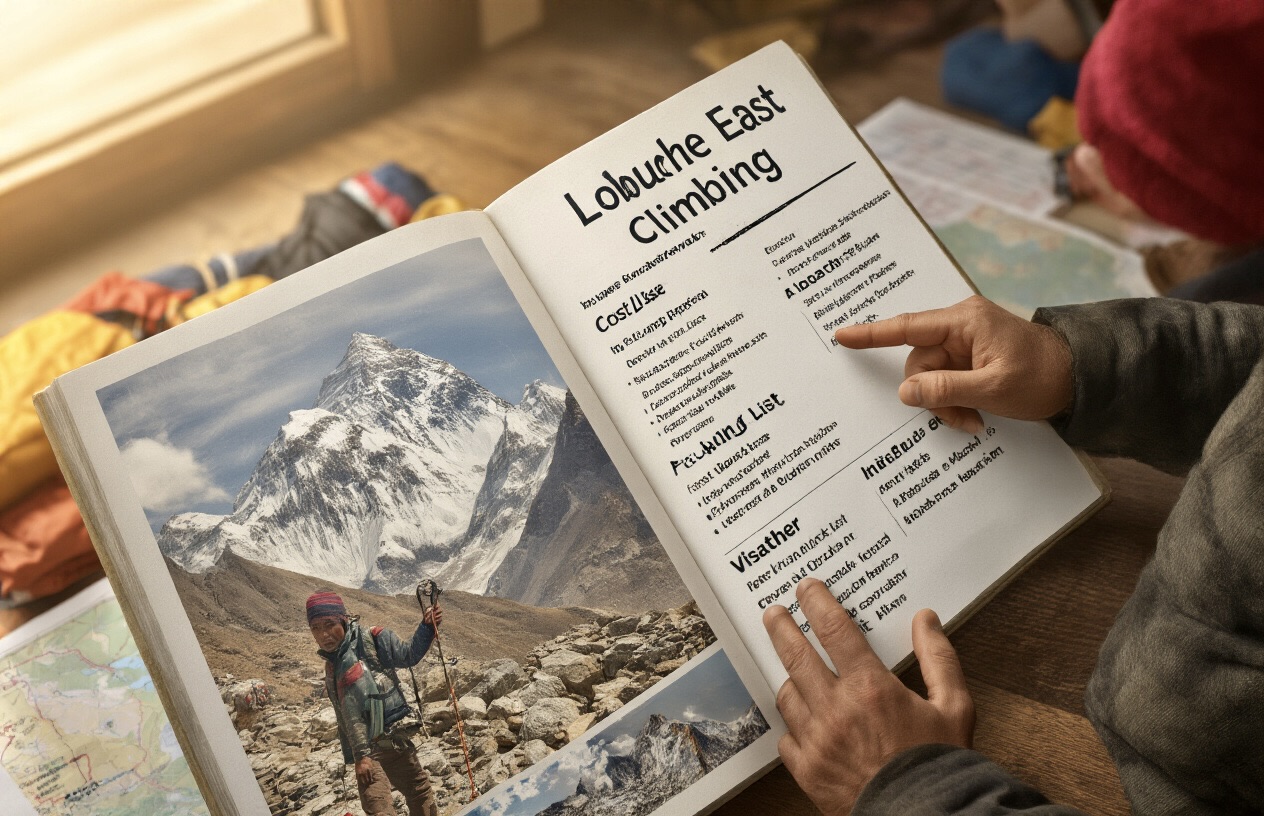
What sets our guides apart? Their deep connection to these mountains. As locals who grew up in the shadow of the Himalayas, they bring generations of knowledge that simply can't be taught in training courses.
Safety Protocols and Emergency Procedures
Your safety isn't an afterthought – it's our obsession. We maintain constant communication between base camp and higher camps through satellite phones and radio systems. Our expedition leaders conduct daily health checks to monitor for altitude sickness and other potential issues.
Before your climb, we'll walk you through our comprehensive evacuation procedures. We've partnered with helicopter rescue services that can reach Lobuche East within hours if needed. Every expedition carries emergency oxygen, first aid equipment, and medication specific to high-altitude emergencies.
Equipment Provided
We supply all the technical climbing gear you'll need:
- High-quality climbing ropes and harnesses
- Ice axes and crampons
- Ascenders and descenders
- Carabiners and slings
- Fixed ropes on technical sections
- Group camping equipment, including kitchen gear
Our equipment is inspected before every expedition and replaced regularly. No worn-out gear makes it onto our climbs.
Support Team Structure
Behind every successful summit is a powerful team. Our typical Lobuche East expedition includes:
- 1 lead climbing guide (1:2 client ratio)
- Assistant climbing guides
- Camp manager overseeing logistics
- Experienced high-altitude porters
Professional cook team preparing nutritious mealsThe magic happens when everyone works together. Our porters establish camps ahead of your arrival, cooks prepare energy-rich meals, and guides manage your climbing strategy. This well-oiled machine lets you focus on one thing – reaching that stunning summit.
What Sets Our Lobuche East Expedition Apart
Local expertise and knowledge
We're not just another trekking company. Our team consists of native Sherpas who've grown up in the shadow of these mountains. Born and raised in the Khumbu region, our guides know Lobuche East like the back of their hand. This isn't knowledge you can get from books or training programs – it's passed down through generations.
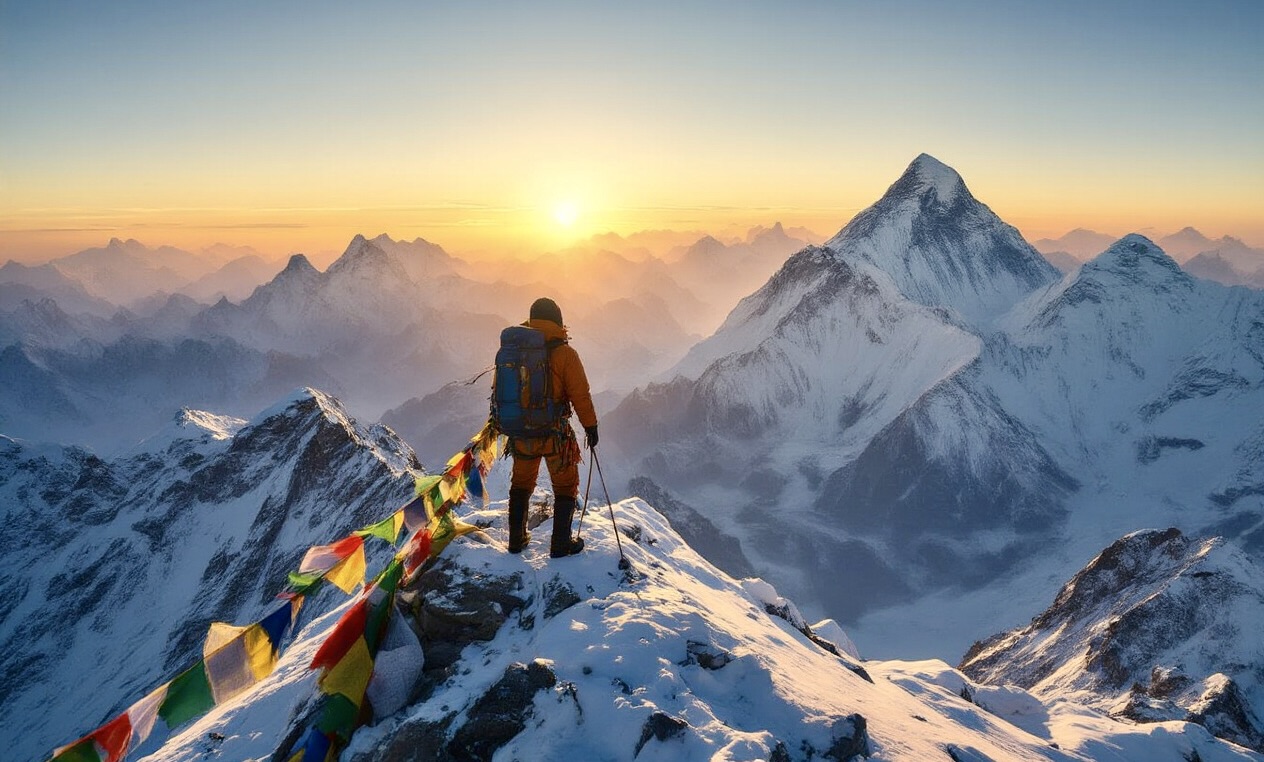
Our local connections mean we can offer unique insights and experiences you won't find elsewhere. From knowing which teahouses serve the best dal bhat to understanding exactly when to push for the summit based on local weather patterns, our team's intimate knowledge makes all the difference.
Sustainable climbing practices
The mountains have given us everything, so we make sure to give back. Our expeditions follow strict "leave no trace" principles, and we actually carry more waste down the mountain than we bring up.
We've invested in:
- Solar charging stations at our base camp
- Waste management systems throughout the climb
- Local community support programs that ensure tourism benefits everyone
Our commitment goes beyond just words. Each expedition contributes directly to conservation efforts in the Sagarmatha National Park, helping preserve this pristine environment for future climbers.
Success rate statistics
The numbers speak for themselves. Over the past five years, we've maintained a 94% summit success rate on Lobuche East – significantly higher than the industry average of 78%.
Why such impressive stats? Simple:
- We never rush acclimatization
- Our group sizes stay small (maximum 6 climbers per guide)
- We build extra weather days into every itinerary
- Our equipment is meticulously maintained and replaced regularly
Safety always comes first, but we know you're here to reach the top. Our success rate reflects the perfect balance between ambitious climbing goals and responsible mountaineering practices.
Practical Information
Visa requirements
Getting your visa sorted for Nepal should be your first step. We recommend applying for a tourist visa before arrival. Most nationalities can also get one upon arrival at Kathmandu Airport, but having it ready saves precious time. The visa fees are pretty straightforward:
- 15 days: $30
- 30 days: $50
- 90 days: $125
You'll need a passport valid for at least six months beyond your stay and two passport-sized photos. For Lobuche East, we suggest at least a 30-day visa to accommodate the full climbing itinerary plus some buffer days.
Travel insurance recommendations
Don't even think about climbing without proper insurance! We insist all our climbers have comprehensive travel insurance that specifically covers:
- High-altitude trekking and climbing (above 5500m)
- Emergency helicopter evacuation
- Medical expenses up to $100,000
- Trip cancellation and interruption
Companies like World Nomads and Global Rescue offer policies designed for mountaineers. Always double-check that your policy explicitly mentions mountaineering activities - many standard travel policies exclude them.

Packing checklist
Packing right can make or break your Lobuche East experience. Here's what we suggest:
Technical gear:
- Mountaineering boots (plastic or hybrid)
- Crampons compatible with your boots
- Ice axe (55-65cm)
- Climbing harness with carabiners
- Ascender and descender devices
- Helmet
Clothing:
- Down suit or heavy down jacket
- Waterproof/windproof outer layers
- Thermal base layers (2-3 sets)
- Expedition weight fleece layers
- Warm trekking pants
- Waterproof gloves and liner gloves
- Warm hat and sun hat
- Buff or neck gaiter
Other essentials:
- Sleeping bag (-20°C rating)
- Headlamp with spare batteries
- Sunglasses (100% UV protection)
- Sunscreen (SPF 50+)
- Personal medications
- Water bottles/thermos
Communication options during the climb
Staying connected while on Lobuche East is easier than it used to be, but still has limitations. We recommend:
- Local SIM Card: Ncell and NTC work in lower areas. We'll help you get one in Kathmandu.
- Satellite Phones: We carry one for emergencies, but you can rent your own if needed.
- Two-Way Radios: Our guides use these for communication between groups.
- Portable WiFi: Available in teahouses up to Lobuche village, but don't count on it higher up.
Cell coverage exists up to base camp but becomes unreliable beyond. We always maintain communication with our Kathmandu office throughout your climb for safety purposes.
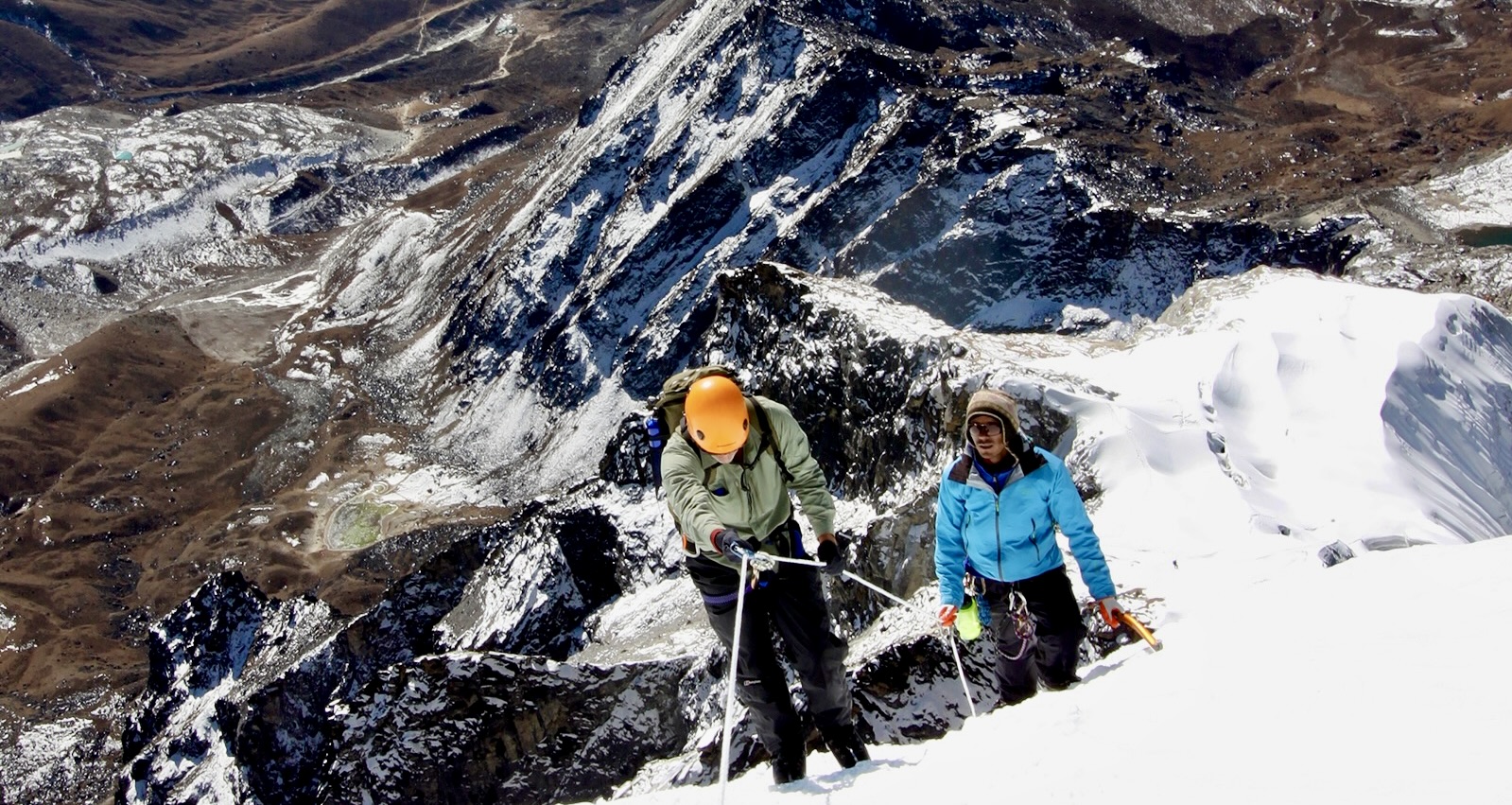
Your Adventure Awaits on Lobuche East
Scaling the impressive Lobuche East peak offers climbers a perfect blend of challenge and achievement, with breathtaking Himalayan views as your reward. From understanding the comprehensive costs to following our carefully crafted itinerary and preparation guidelines, you now have all the essential information to embark on this remarkable journey. With Everest Sherpa Expeditions' experienced guides, quality equipment, and personalized service, your expedition will be both safe and memorable.
Ready to conquer Lobuche East? Contact Everest Sherpa Expeditions today to book your climbing adventure. Our team of local experts is standing by to answer your questions and help customize your journey to this magnificent Himalayan peak. Don't just dream about the mountains – climb them with those who call these peaks home.
If you need any further information, please contact us by email: [email protected], Phone: +977- 980 195 6248 (WhatsApp).


